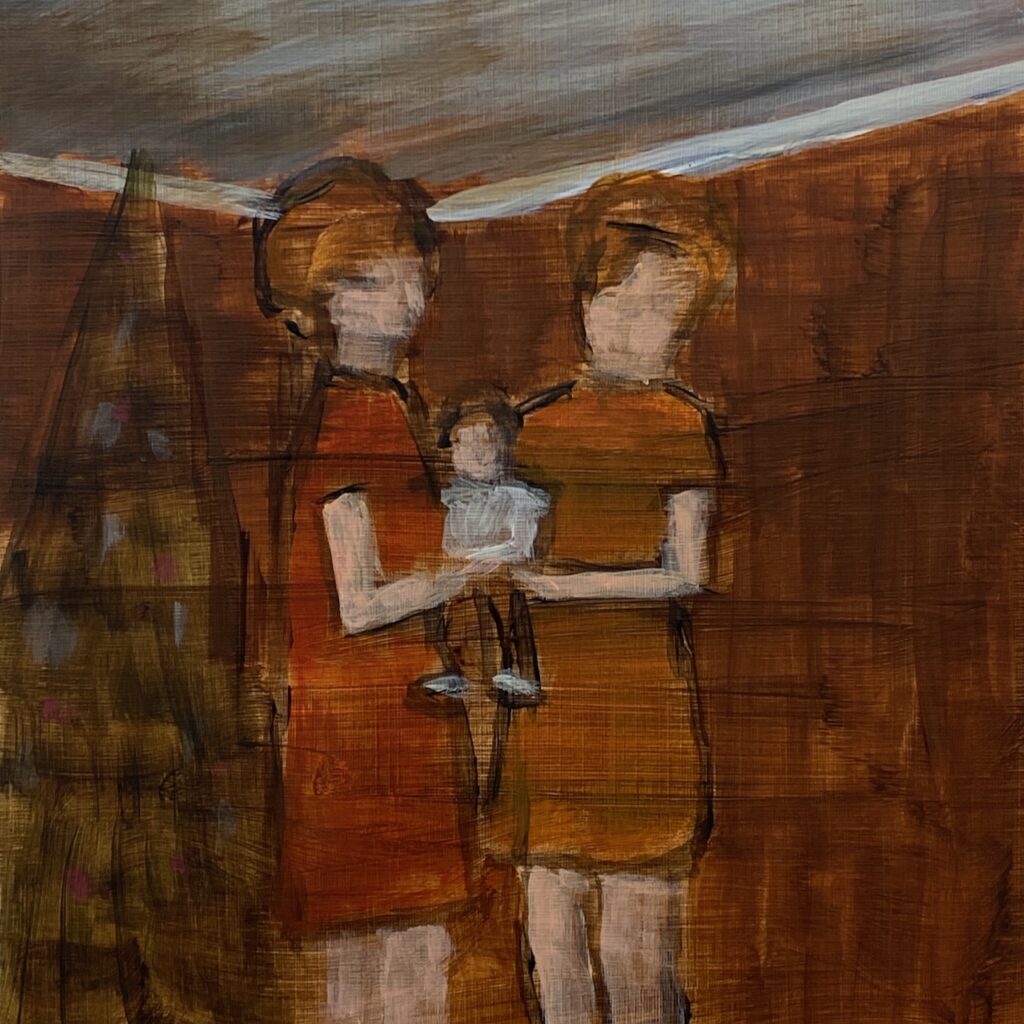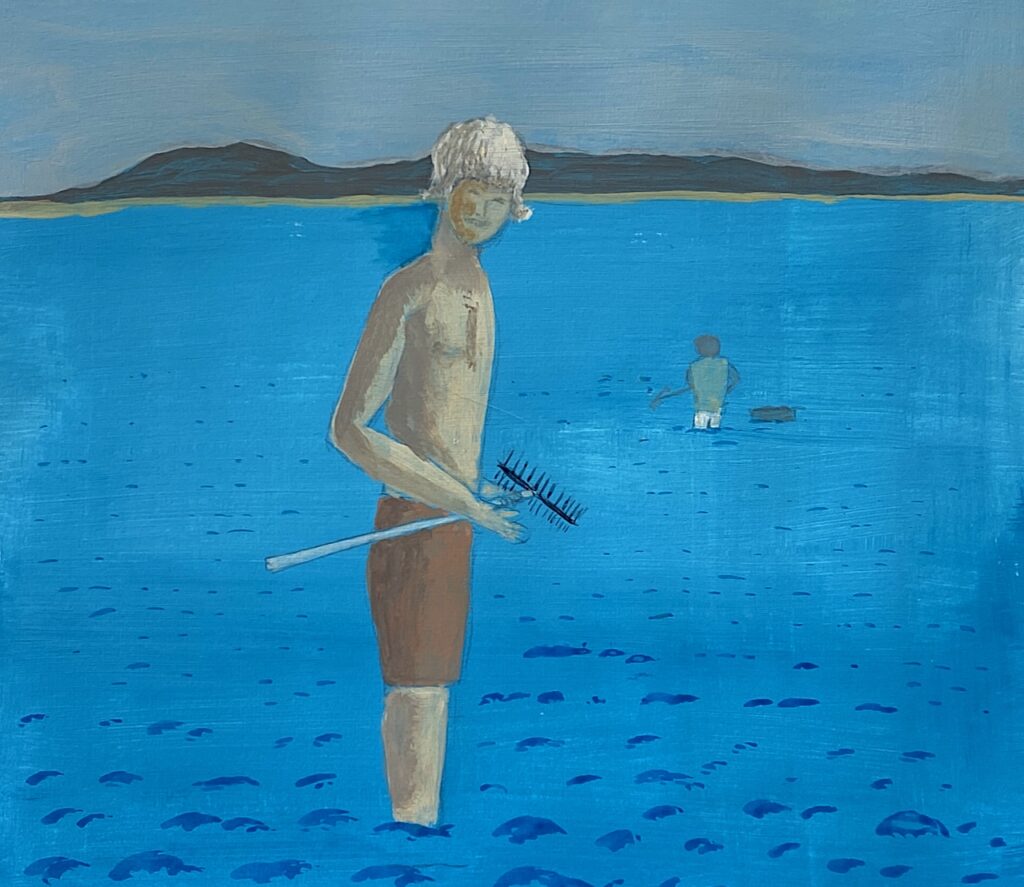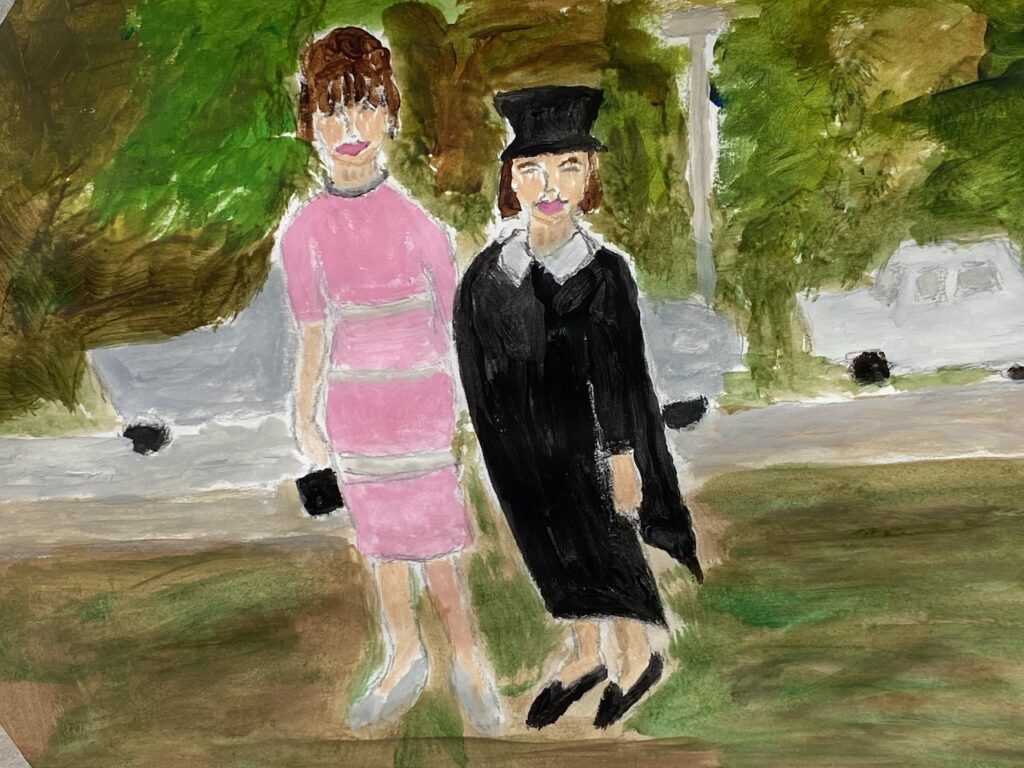Written by Paul Regan, ©paulregan.studio
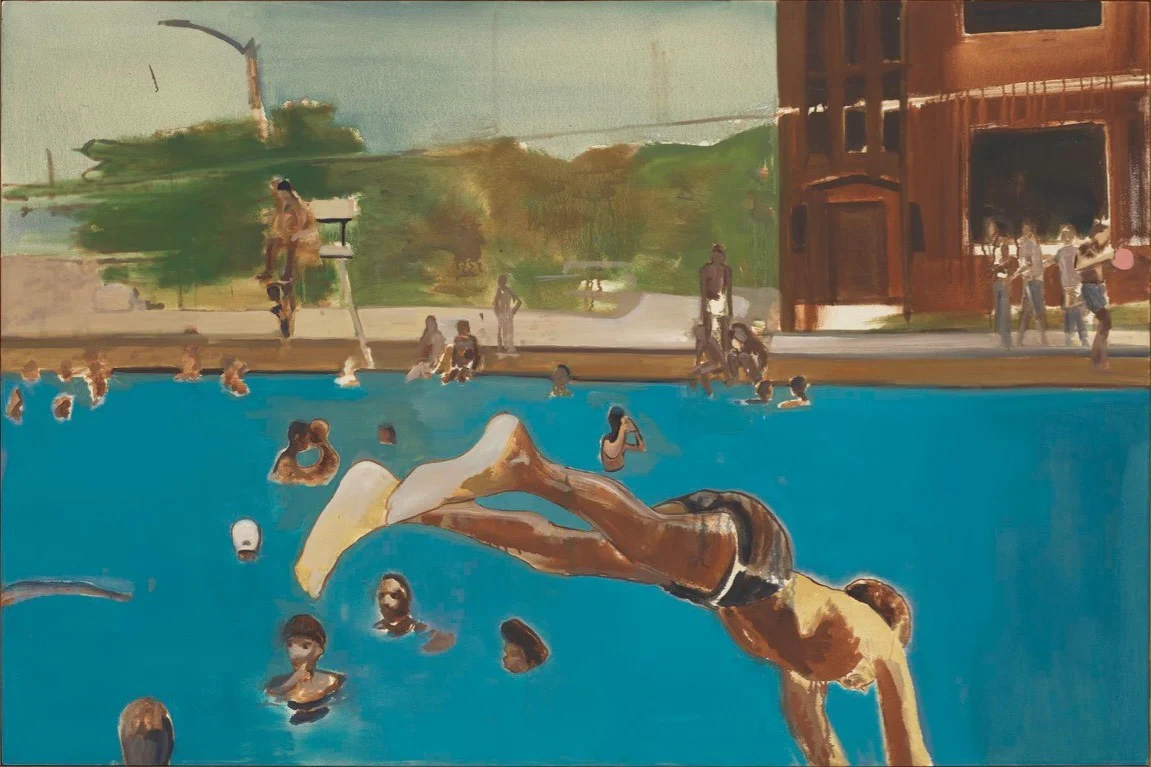
At the bottom of this page, you’ll find six paintings produced during a two and a quarter hour workshop inspired by the Noah Davis exhibition at the Barbican in 2025.
The aim of the workshop was to engage students to connect with a single, randomly selected found photograph depicting an everyday scene, and to capture the nostalga of the scene, in a loose, contemporary painting style.
Part 1: Looking at the work of relevant artists.
A free audio guide for the Noah Davis exhibition is still available online. Part 13: ‘The 1975’, talks about Davis’ swimming pool painting (above), made from a photograph his mother had taken during her High School days.
There is also this blog post showing artwork made in response to imagery found in the media. It was inspired by the ‘Painting of Modern Life‘ exhibition at the Hayward Gallery in 2007.
Elisheva Biernoff‘s meticulously detailed acrylic reproductions of found photographs are also worth discussing.
Part 2: Sketching to gather information
Students were randomly given one found photograph each (Purchased on Etsy), and given five minutes to discuss the content with other students in the studio. This was followed by fifteen minutes to record as much of the image as possible by drawing with coloured pencils, note taking and committing the image to memory.
The photographs I purchased for the workshop were from 1960s and 1970s America; everyday snippets of the lives of unknown people that, for whatever reason, compelled someone to take a photograph.
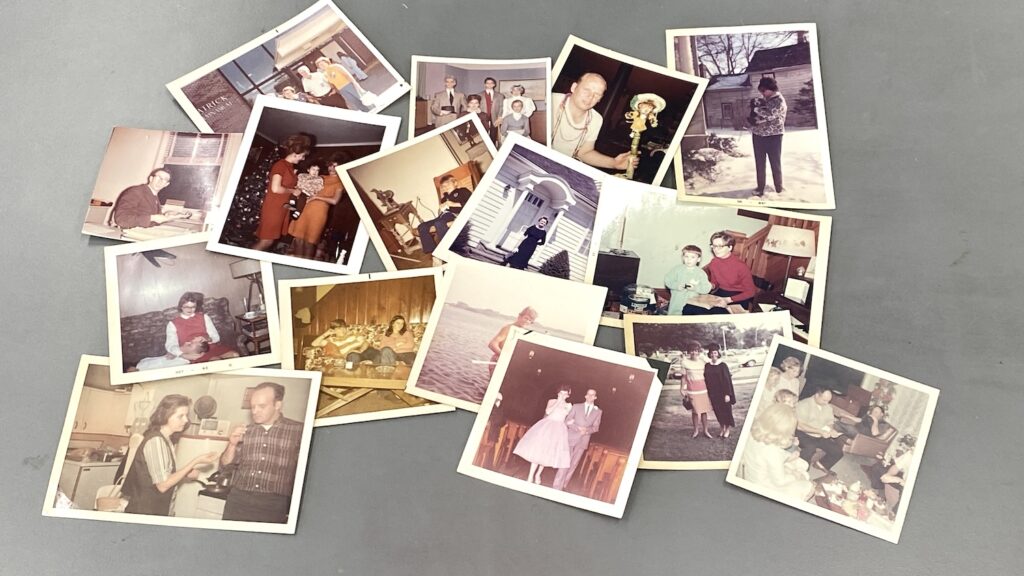
Part 3: Contemporary painting study.
Having collected the photographs back in, students were given 75 minutes to make colour painting studies from their sketches, memory and imagination.
Peter Blegvad’s book came to mind at this point, as well as the Black Mirror episode, ‘Eulogy’ S7: Ep5).
By restricting the time given for both the coloured pencil sketches and the painting studies, many students found themselves producing a more loose and contemporary painting than usual. Also, due to things like; the colour palette in the photographs, the lack of detail available (the photographs were small), the ridged ‘don’t waist that shot!’ poses, and the design styles of the time, students also achieved work that felt nostalgic and suggested memory.
